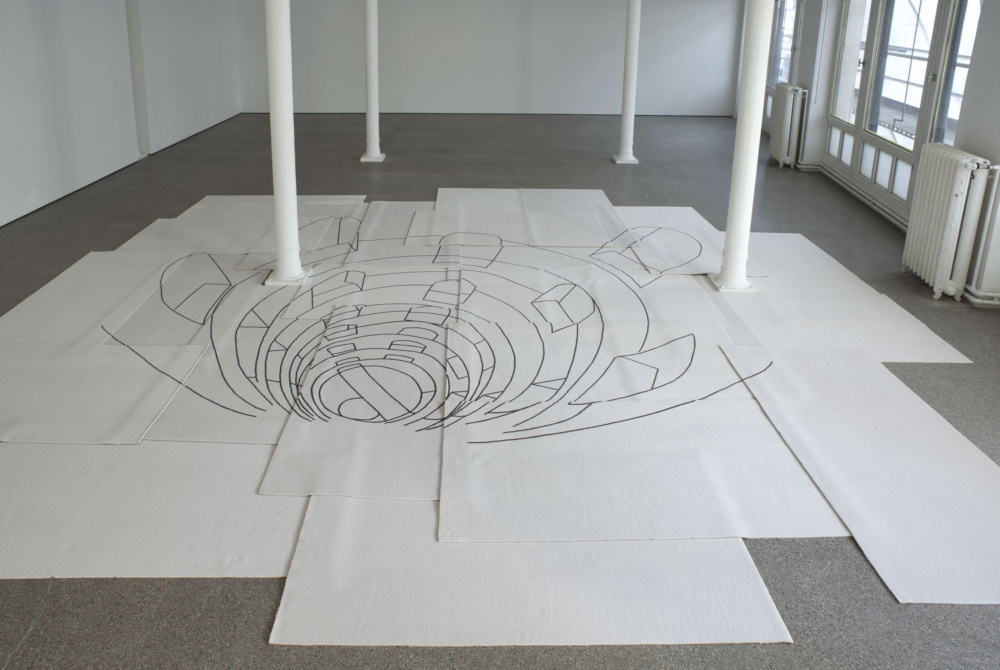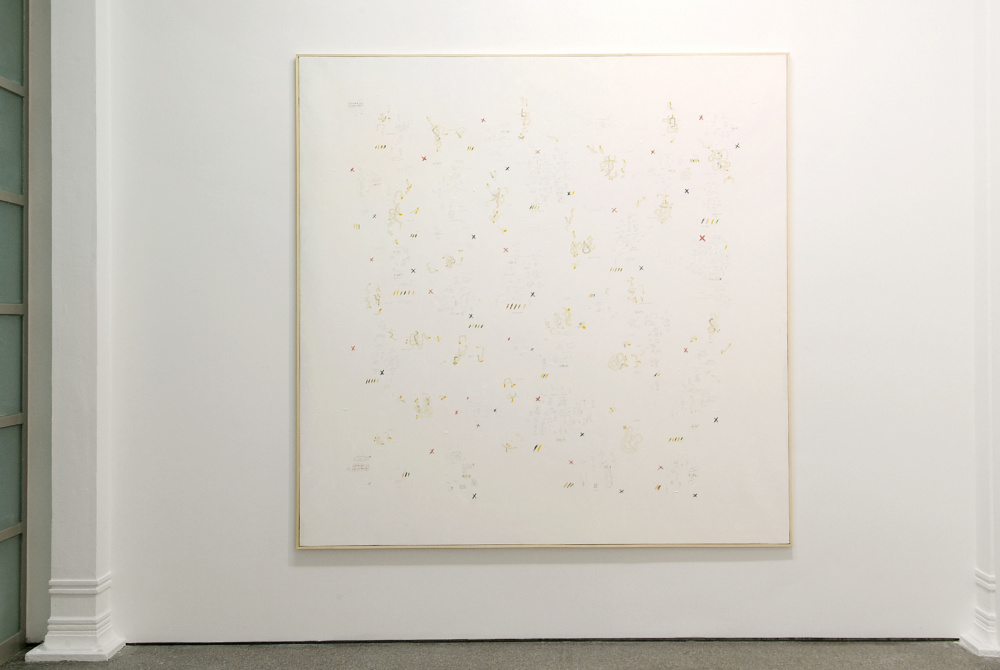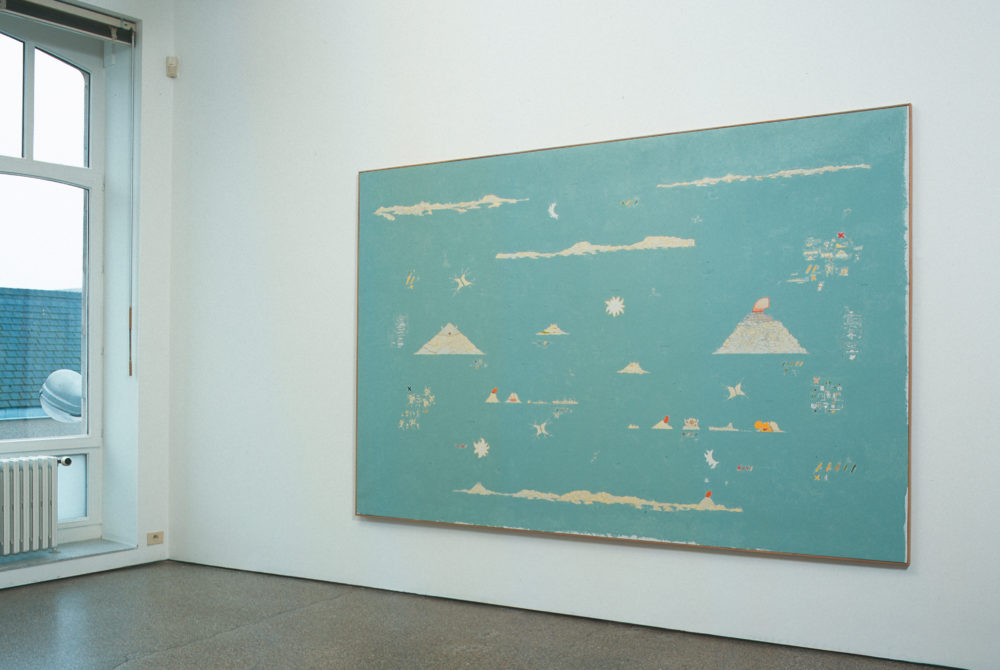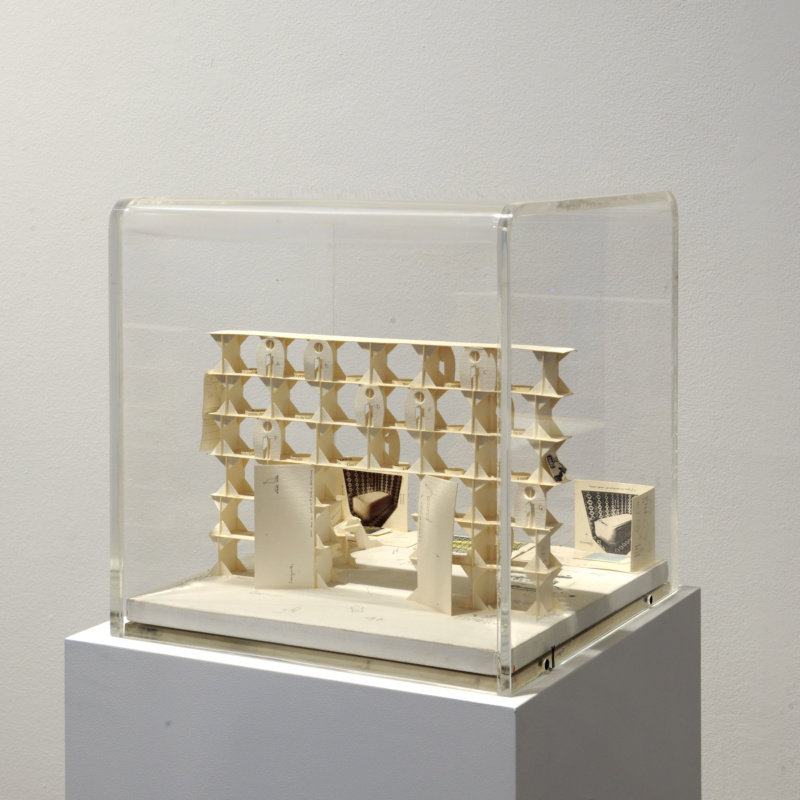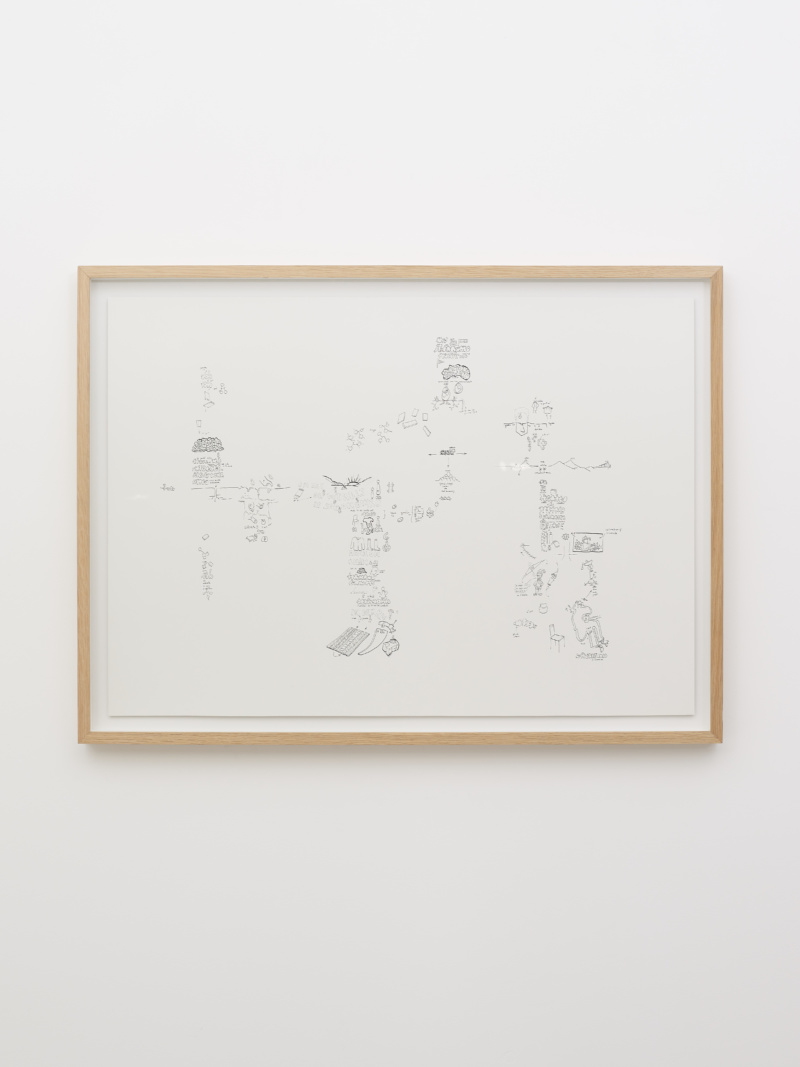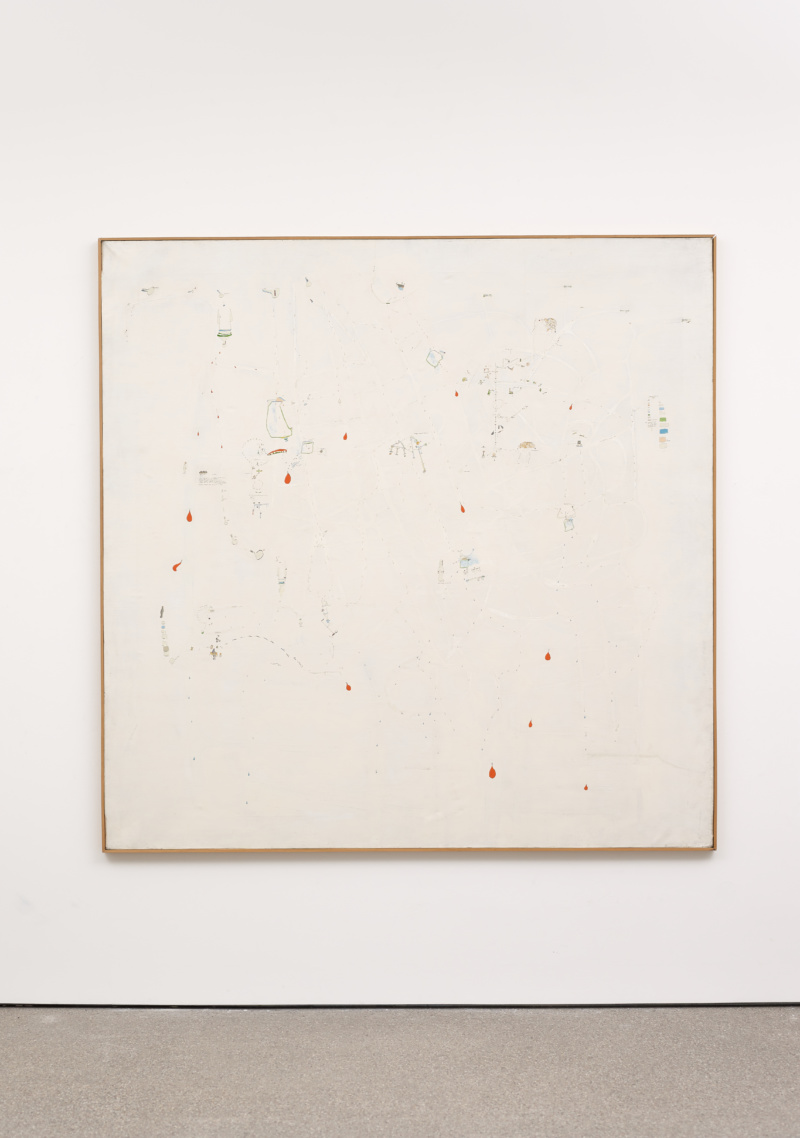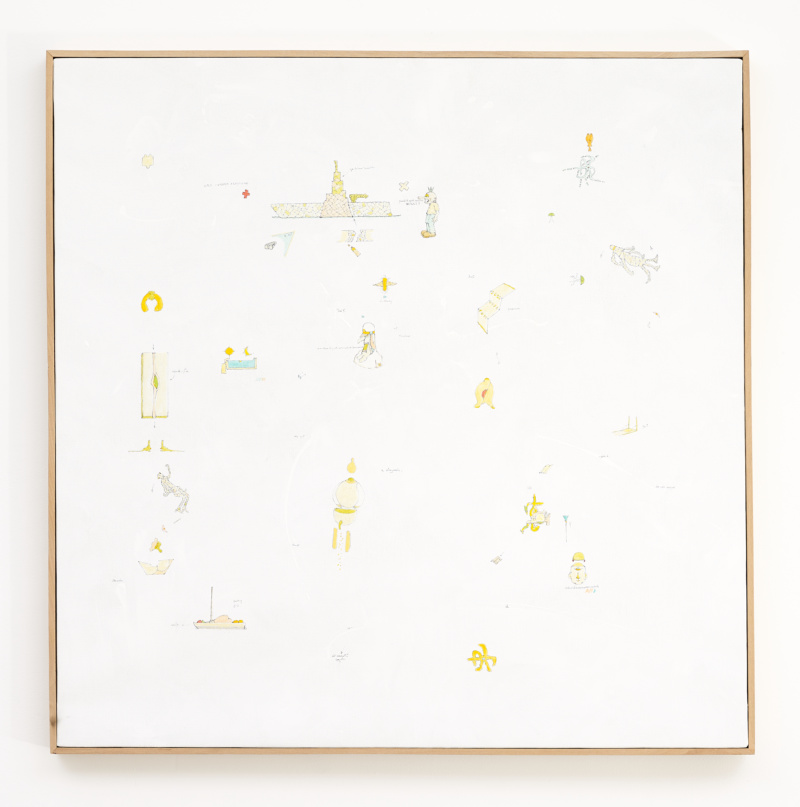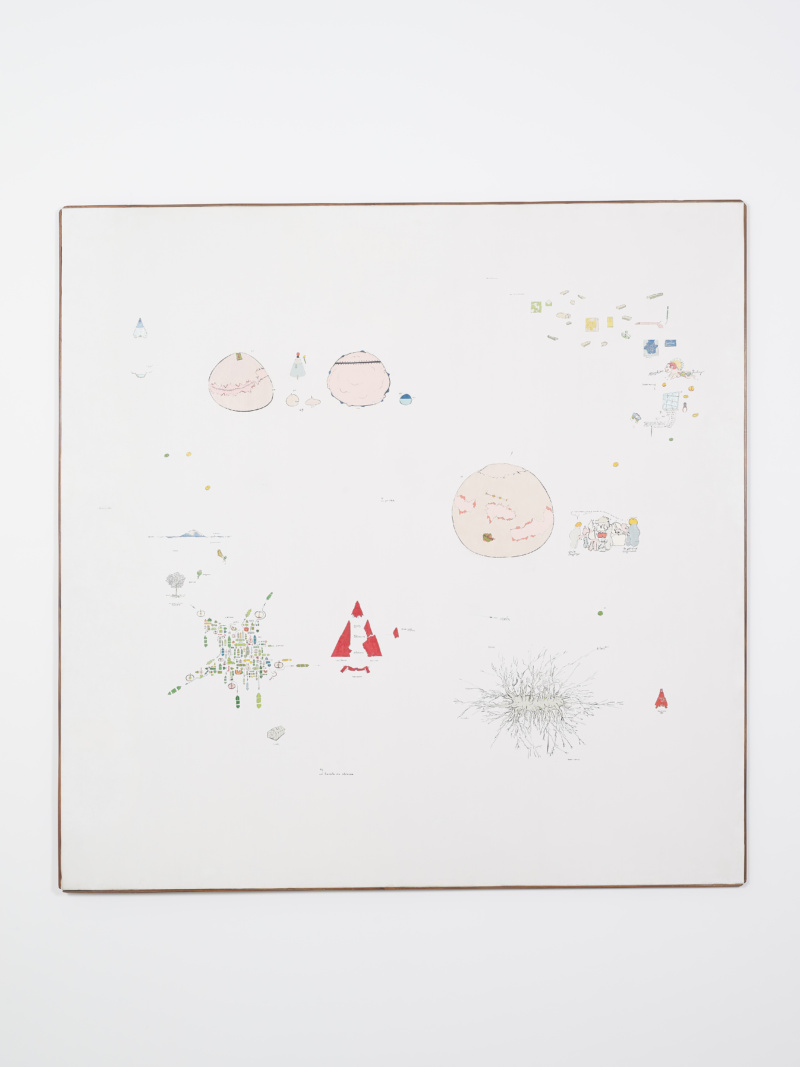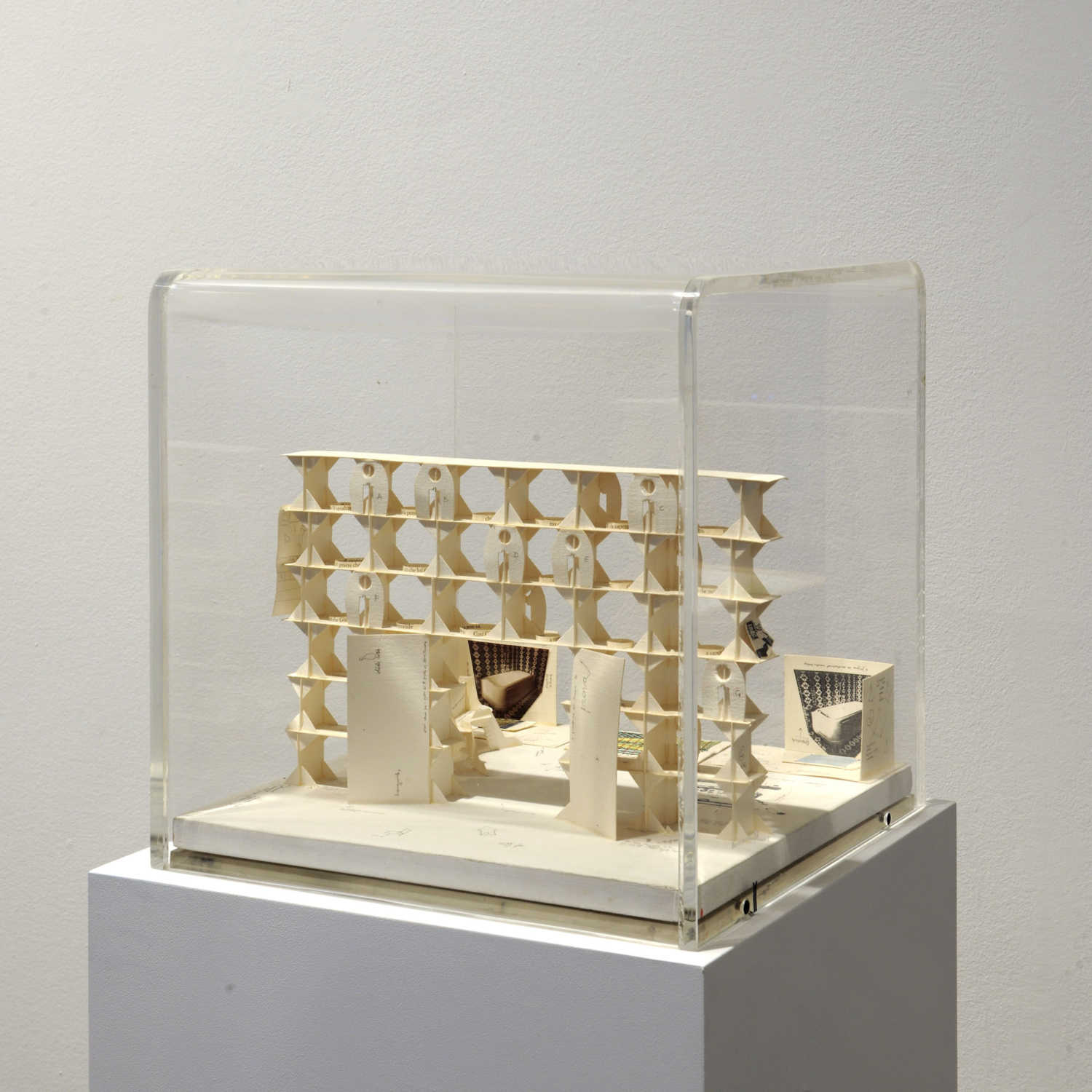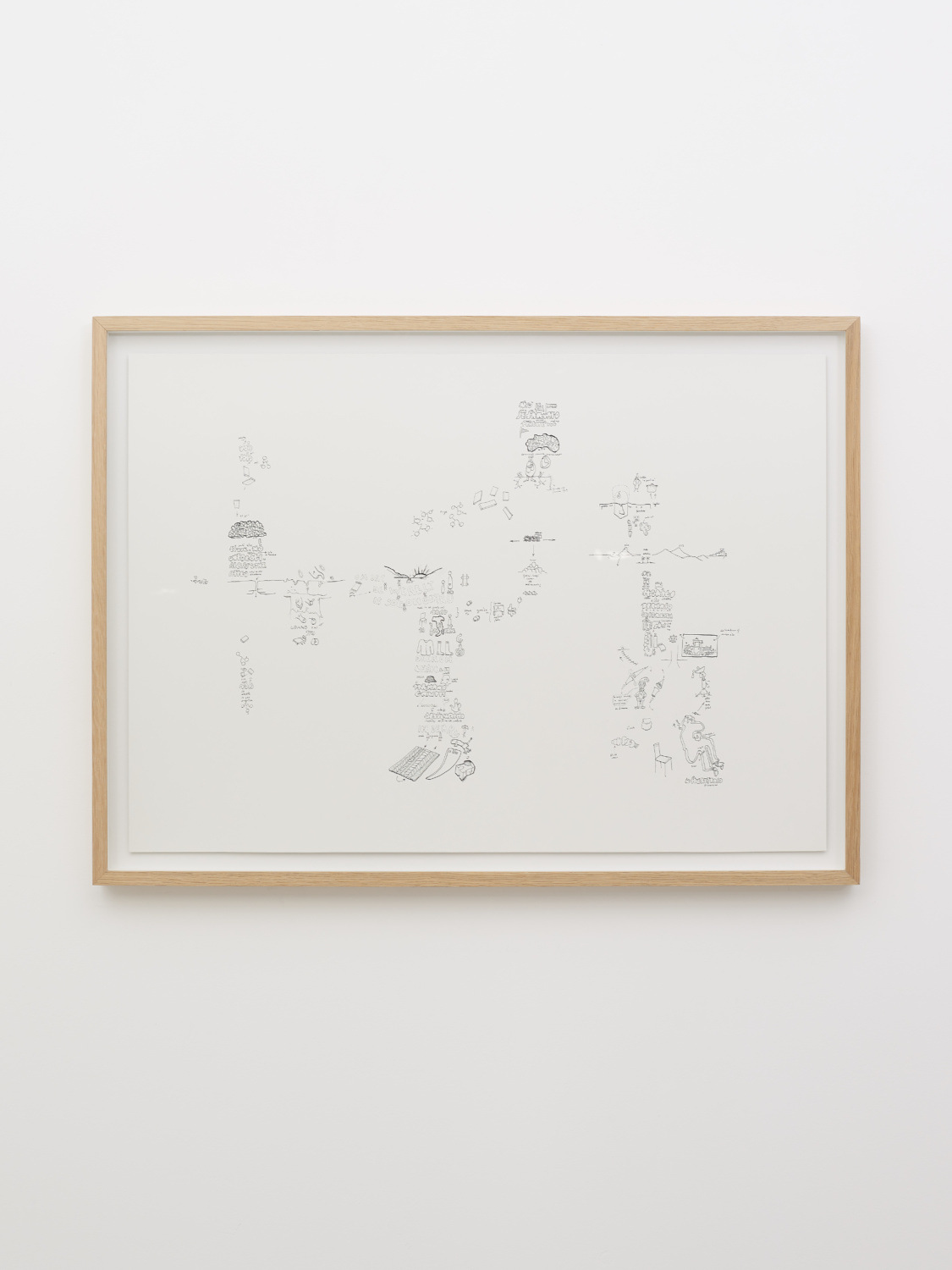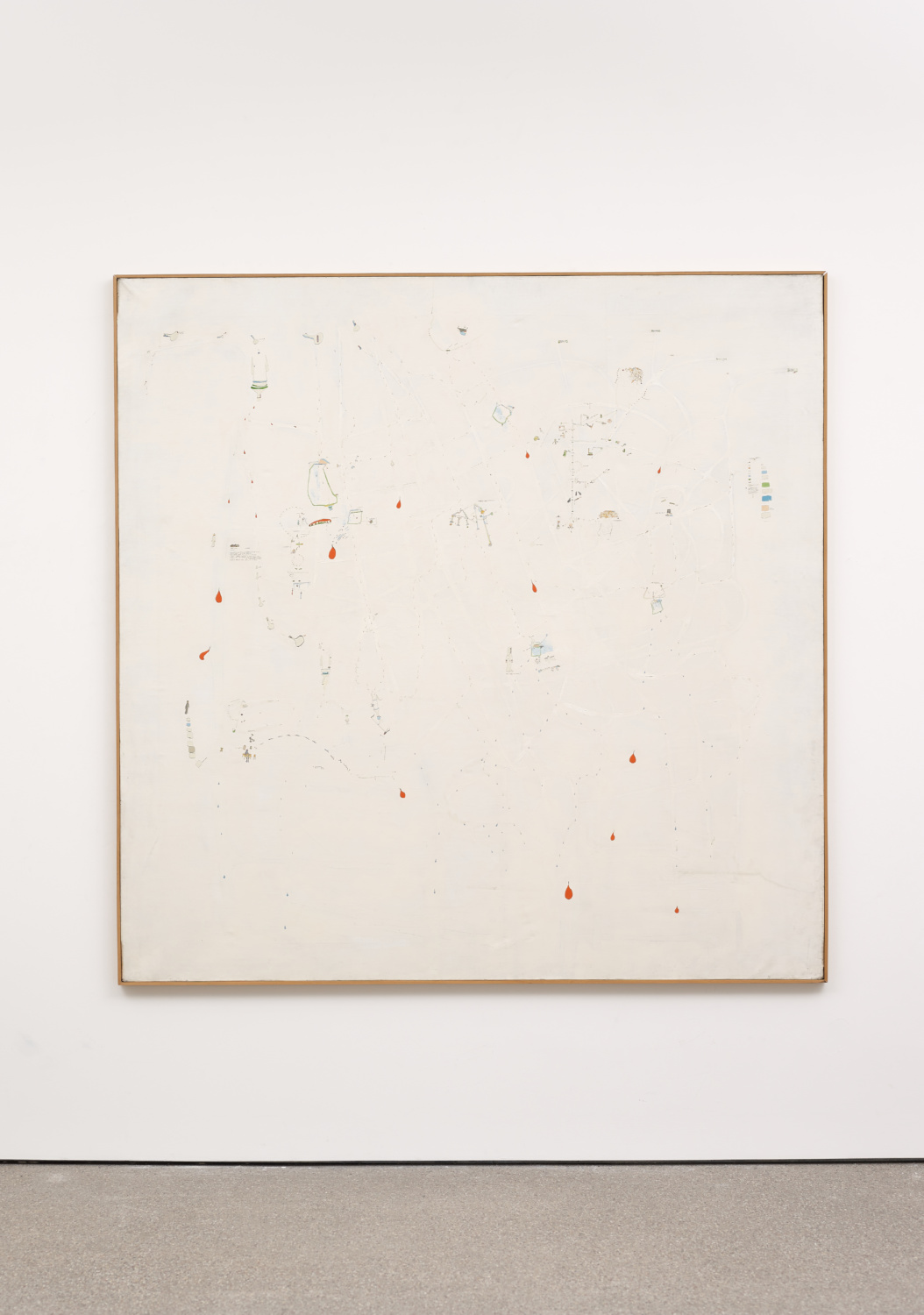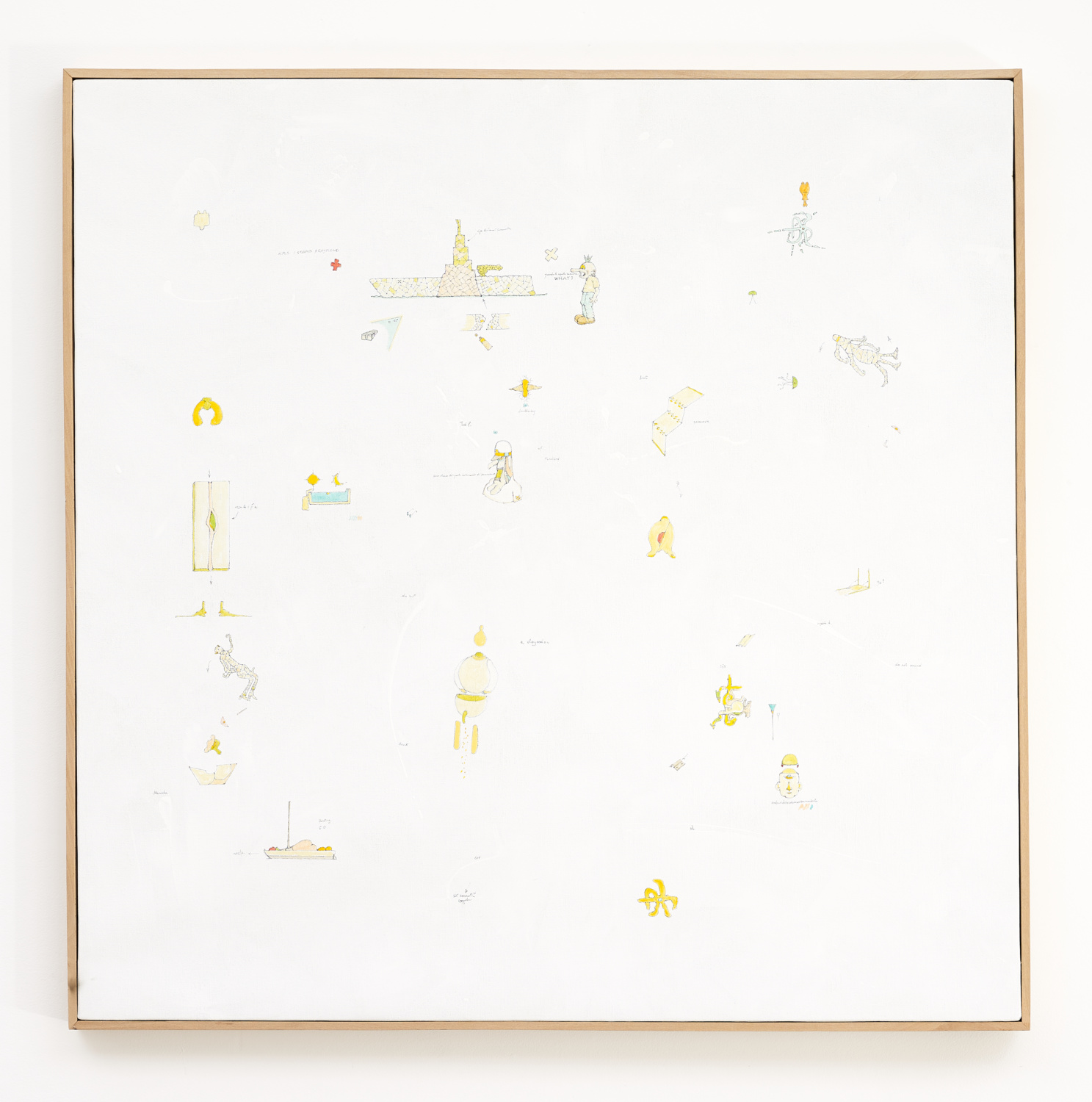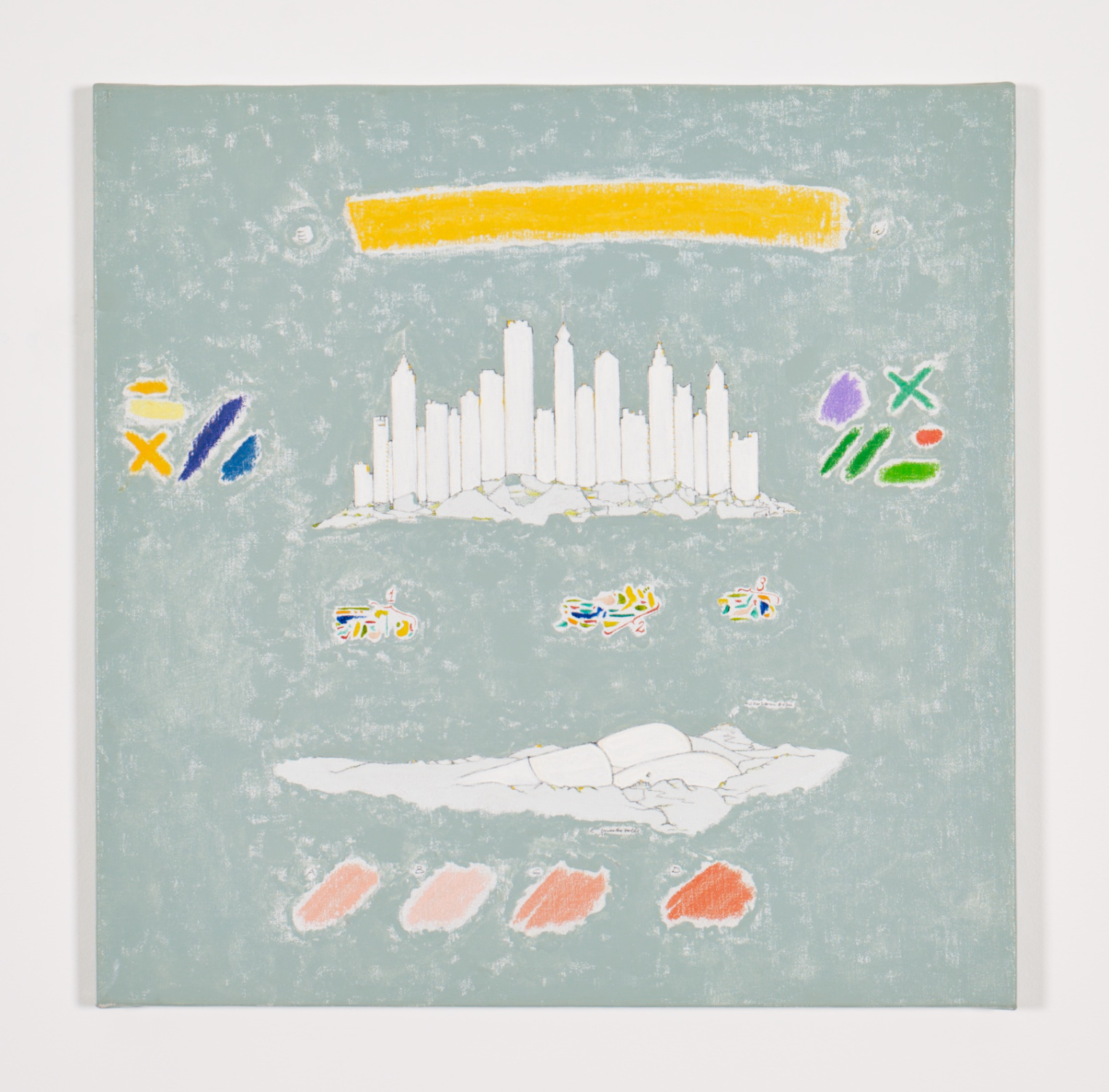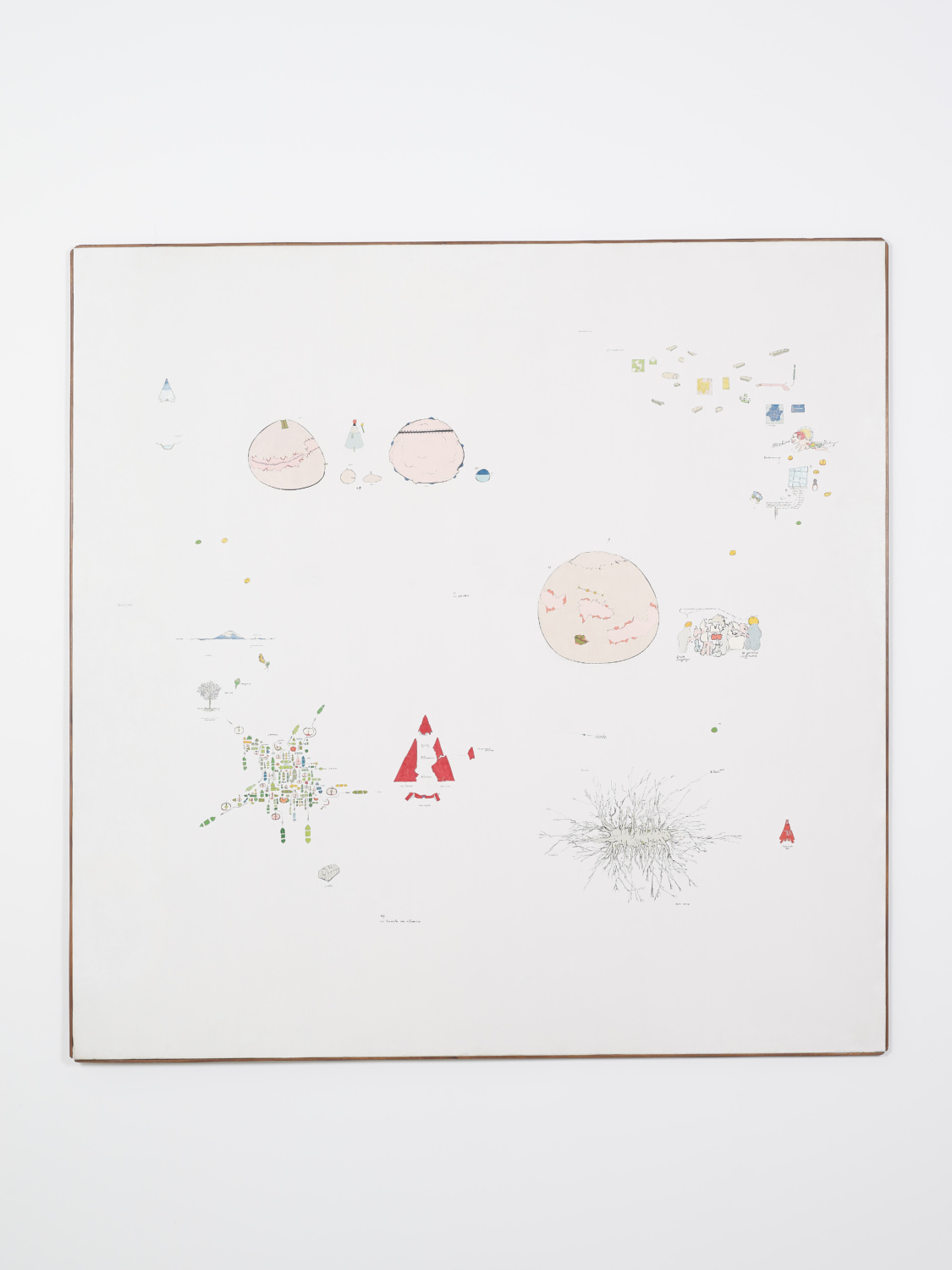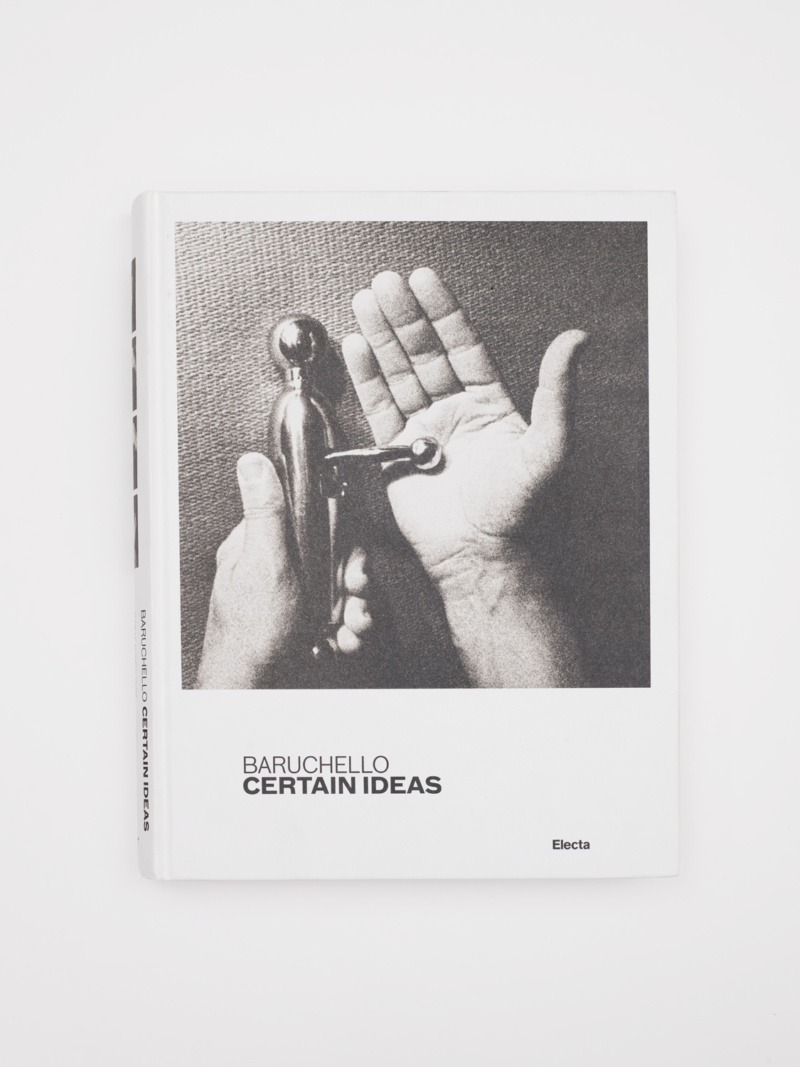
About the artist
b. 1924 in Livorno, Italy
d. 2023 in Rome, Italy
Gianfranco Baruchello’s work explored the human psyche through drawings and paintings of symbols, systems, and words. “Every new work I make functions as a tool, a device to understand and test if my language is still working,” he once explained. A self-taught artist, his earliest works consisted of paintings based on the small details of his daily life. After moving to Paris in the early 1960s, he had a fateful meeting with Marcel Duchamp, who would become a lifelong friend. Baruchello later traveled to New York, where he met John Cage and took part in the group exhibition “New Realists” at the Sidney Janis Gallery. After inheriting an abandoned villa outside of Rome in the early 1970s, the artist established a farm where he grew crops and raised cattle and sheep.
Exhibitions
Publications

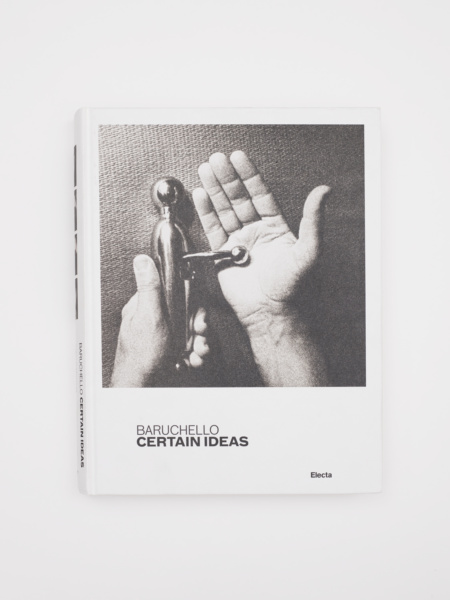
Gianfranco Baruchello
Certain Ideas
The catalogue of the exhibition at the Rome “Gnam” not only documents the whole exhibtion but is also intended as a broad monograph about the artist’s work.
This is the first time that Baruchello has opted to publish a book that describes his long and creative artistic career over almost seven decades. It is prefaced by two contributions by Achille Bonito Oliva, the art critic, and Carla Subrizi, the Foundation’s artistic director. The various sections, each one of which focuses on a phase of research, are introduced by a new text and a selection of earlier writings by the artist himself, some of which have already been published but which can no longer be found on the market. The illustrations cover far more ground than the works displayed in the exhibition and include many photographs taken by Claudio Abate. Finally, the book contains exhaustive documentation (technical data, photograms and synopses) of the films and other video productions made by the artist from 1963 to the present day, as well as a catalogue of the works featuring in the exhibition.
Gianfranco Baruchello was born in 1924. He’s an artist of international renown, he loved to experiment with new artistic techniques and languages. Having studied under Duchamp in Paris, he exhibited his work for the first time in New York in 1962. The following year, he began a long-lasting working partnership with the Schwartz Gallery in Milan. His experiments with electronic images and video date from the early seventies. In 1975, he went to live in the country and set up the Agricola Cornelia S.p.A. farm, a project which continued until 1981. Over the years, his interests ranged from agriculture and stock-rearing to the gardens and then woodland. A reserved person with strong political ideas, he could not be associated with any particular artistic movement. In 1998, he created the Fondazione Baruchello, headquartered at his house-cum-studio and archive, which became a springboard for wide-ranging research into contemporary art.
Year: 2011
Dimensions: 28 x 22 cm
Pages: 480
Language: English
Material: Hardcover

